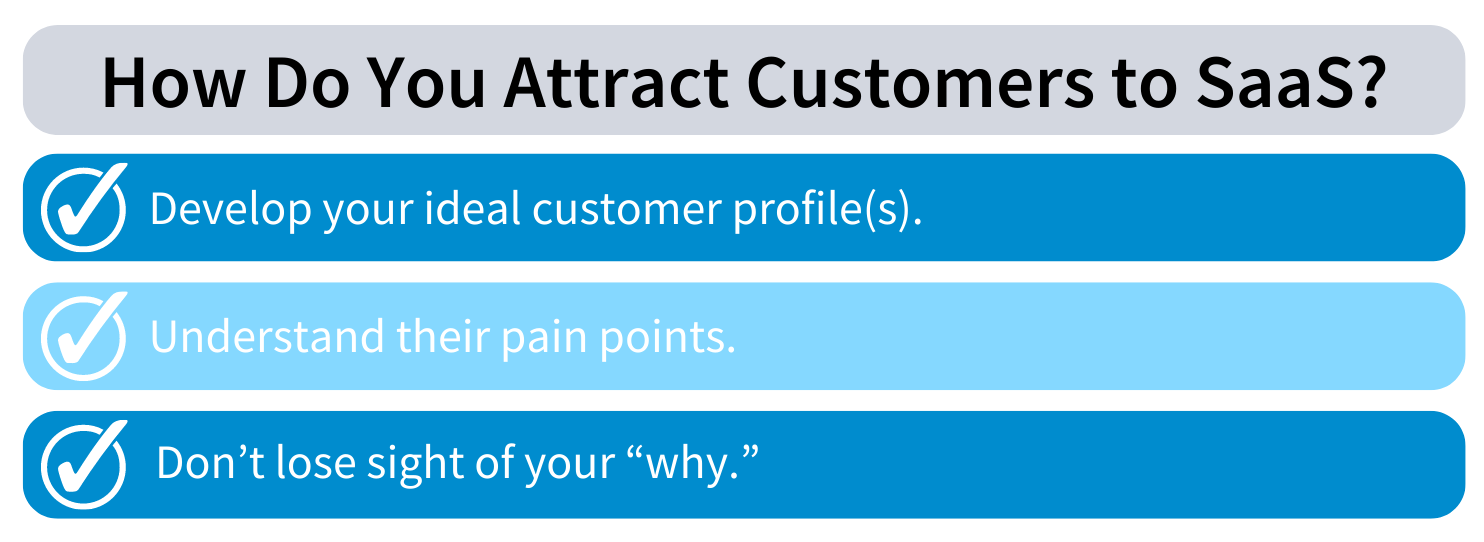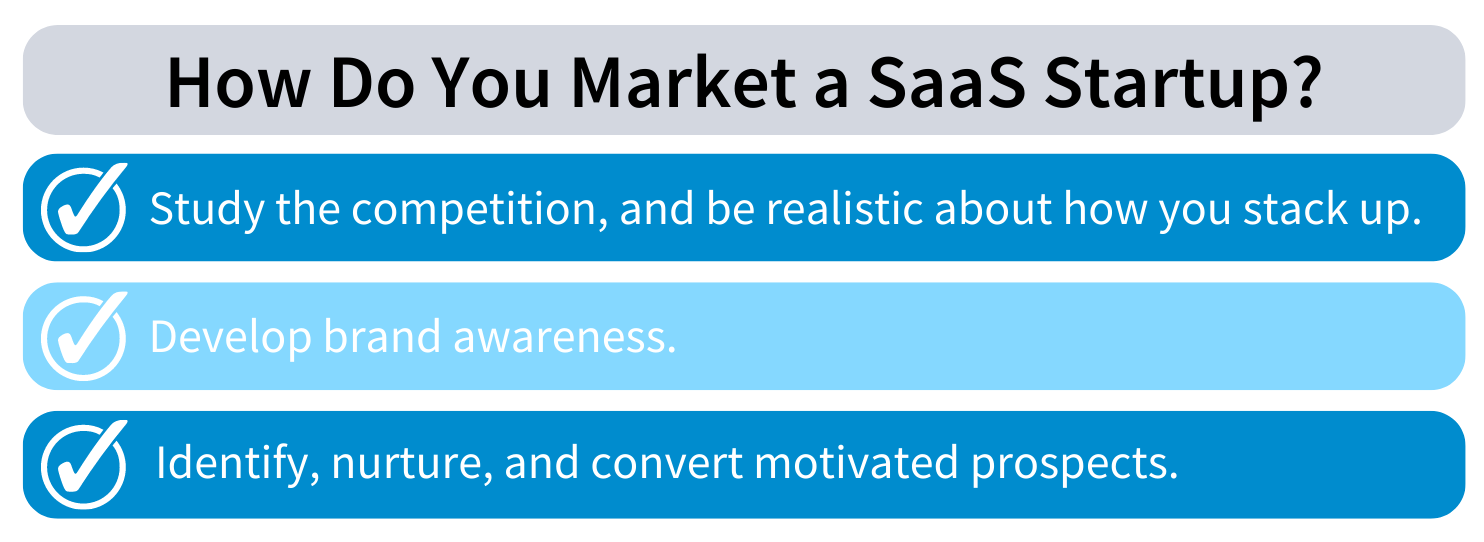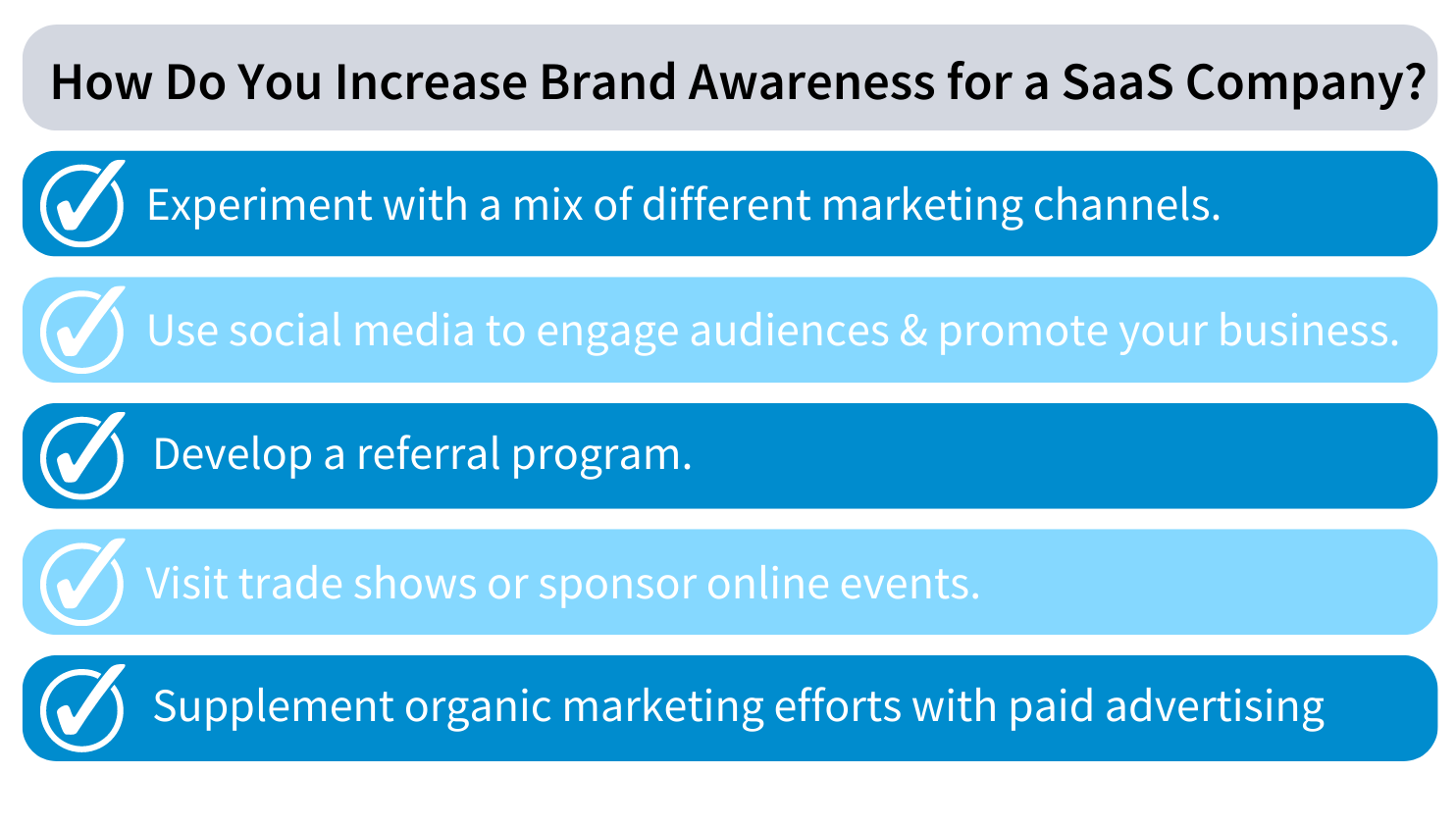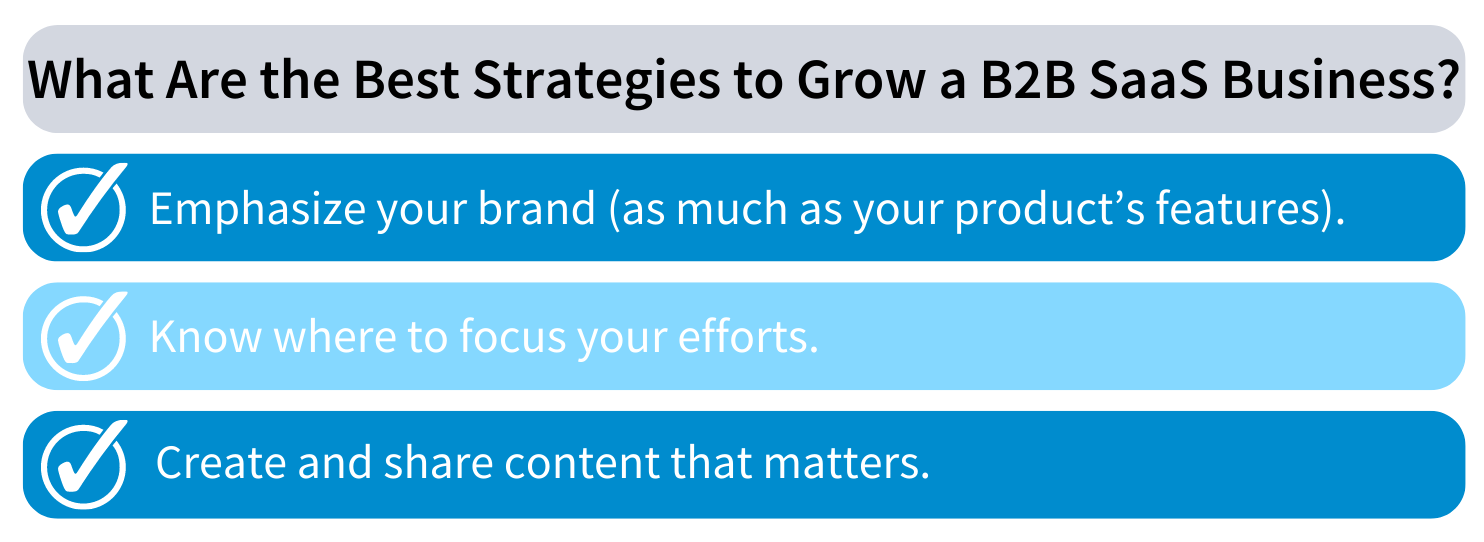How Can SaaS Improve Marketing?
November 30, 2022 •Josh Daugherty

There are no two ways about it, SaaS marketing is just different. For one, SaaS marketers have to think seriously about adding customer value at every touchpoint, to ensure that when renewal time rolls around, a customer’s decision to re-up is an easy one.
It can also be difficult to explain the tangible value of an intangible product or service. And even though the SaaS sales cycle is generally shorter, it still has distinct phases. For marketers, this means thinking strategically about how they’ll attract, engage, and retain clients over the course of their relationships.
That being said, the overall goals—whether we’re talking about software-as-a-service or a more traditional product—are something they have in common. The objectives are simple: generate brand awareness, attract and engage prospects, and build valuable long-term business to business (B2B) relationships.
In this blog, we’re going to outline a few SaaS marketing best practices that can help you develop the types of strategies that will give you the advantage over the competition.
How Do You Attract Customers to SaaS?
One of the greatest challenges of SaaS B2B marketing relates to building a customer base that trusts your company and understands the distinct benefits your SaaS product provides. Here’s how to do that:
- Develop your ideal customer profile(s). What types of companies is your SaaS product designed to help? Consider factors such as company size and location, industry, what they promise their customers, their headcount and budget, and so on. This way you can tailor your pitch to their use cases and where they’re most likely to see real value in what you’re offering.
- Understand their pain points. Develop a deep understanding of how your ideal customers prefer to do business. What are their primary pain points, or areas in which their current solution might not be meeting their needs? The better you can understand their challenges, the easier it will be to explain the differentiated value you’re offering. Then, you can connect it to what they’re trying to accomplish, and motivate them to make a purchasing decision.
- Don’t lose sight of your “why.” Marketers, whether SaaS or otherwise, get themselves into trouble when they focus too much on features and benefits. Customers can usually compare companies and platforms head-to-head through online, third-party review sites. This means the SaaS marketer’s job is really to focus on how your product can elevate their experience. You’ll need to put your company’s defined mission or vision front and center, letting customers know what your company is all about and positioning you as an organization they’ll want to do business with.

How Do You Market a SaaS Startup?
For B2B SaaS companies, marketing can be complicated. In a way that’s difficult to explain without getting lost in jargon or relying too heavily on explaining features rather than translating them to benefits. In addition, as a startup you most likely won’t have too many compelling customer testimonials or case studies to lean on to illustrate how your product or service works—which is unfortunate because storytelling can be a compelling marketing tactic.
While each of the points in the previous section also apply to SaaS startups, a few tips geared toward marketing a startup include:
- Study the competition, and be realistic about how you stack up. Few SaaS companies are truly one-of-a-kind, and most of the prospects and decision-makers you’ll encounter as a SaaS marketer are fully aware of this. They’ve heard all the superlatives before, about how [X product] is going to “transform” their company and deliver “incredible” results. They’re wary of this approach, so resist the temptation to promise the world. Instead, focus on the tangible short- and long-term benefits your product could bring them.
- Develop brand awareness. If no one knows your company exists, even if you have the most outstanding and comprehensive feature set, it really isn’t going to matter. You can develop brand awareness in myriad ways, including things ranging from email outreach campaigns to highly-targeted content marketing and search engine optimization (SEO) strategies. At DemandJump, we approach content marketing using a Pillar-Based Marketing (PBM) approach, specifically designed to connect companies with their ideal customers, providing value and building trust through informative, engaging content.
- Prioritize efforts to identify, nurture, and convert motivated prospects. Based on your ideal customer profile(s), who are the decision-makers you should connect with? What are the pain points you should appeal to? What are the company objectives your product might help them achieve? In simple terms, you want to learn as much as you can about your customers, so you can develop strategies that will connect the right marketing actions with the right audience.

How Do You Increase Brand Awareness for a SaaS Company?
Whether you’re a startup or have been in business for years, increasing brand awareness helps with efforts to attract new customers over time. As you refine your ICP over time, you can further develop your value propositions and campaign strategies to attract your ideal new customers. The extent to which you should gear your efforts toward increasing brand awareness will vary depending on your industry, competitive standing, and other factors.
A few general steps you can take to increase brand awareness include:
- Experiment with a mix of different marketing channels. This includes things like email outreach, content marketing, and SEO.
- Use social media to engage audiences and promote your business. Once you learn the channels your customers are on and most likely to engage with, you can develop platform-specific messaging strategies—using more buttoned-up language on LinkedIn, for example, and more casual language on Twitter or Instagram.
- Develop a referral program. When satisfied customers recommend your company/product to their friends or colleagues, it can give your efforts a big boost.
- Visit trade shows or sponsor online events. These provide great opportunities to connect with motivated buyers and to put a “face” to your company, which helps build affinity as well as trust.
- Supplement organic marketing efforts with paid advertising, in order to leverage a balanced mix of marketing channels and strategies. By diversifying your approach, if one element underperforms, you won’t find yourself back at square one, Googling questions like “How can SaaS improve marketing?”

What Are the Best Strategies to Grow a B2B SaaS Business?
Developing an effective B2B SaaS marketing strategy that will attract customers, differentiate yourself from the competition, and grow your business doesn’t have to be overly complicated. We’ll leave you with a few best practices for growing your B2B SaaS business:
- Emphasize your brand (at least as much as you emphasize your product’s features). In the B2B world, companies do business with companies they trust. If you can demonstrate shared values and a willingness to get to know the ins and outs of their business before you lay out a sales pitch, you’ll be in a great position.
- Know where to focus your efforts. Let’s say you sell a unified communications as a service (UCaaS) platform. If your customers aren’t likely to browse Pinterest for information about SaaS companies that specialize in UCaaS, it doesn’t make much sense to spend marketing dollars on Pinterest promotion. So, where do your customers go for answers—and are you there? We’ve found that SaaS companies mostly use platforms like LinkedIn, Facebook, and Twitter to connect with their target audiences.
- Create and share content that matters. Even though they’ve been around for awhile, content marketing and SEO remain the most compelling options for a growing B2B company. The principle at the heart of effective content marketing is simple: produce and publish content that your customers can relate to and find actionable value in.

How Does DemandJump Help B2B SaaS Marketers Achieve Results?
Ultimately, effective B2B growth starts with understanding what customers are searching for, from which point you can develop content that directly answers their questions and positions your product as a solution to their most pressing needs.
DemandJump makes keyword research and content planning easy, by automating processes that delve deeply into search analytics to provide the content prompts and strategies you need to move the needle on your marketing ROI.
Learn more about how DemandJump can help you develop and implement a content marketing strategy that actually works. For real customer stories, check out our podcast.
Or, you can just try it for free! Click the button below to get started:
Featured Articles
Categories
- Attribution Tracking (13)
- Channel Optimization (11)
- Consumer Insights (68)
- Content Marketing (251)
- Data Science (8)
- Digital Marketing (6)
- Digital Transformation (26)
- Enterprise (10)
- Lead Generation (14)
- Market Intelligence (8)
- Marketing Analytics (39)
- Marketing Attribution (57)
- Marketing Management (153)
- Marketing Operations (86)
- Organic Search (222)
- Paid Search (52)
- Pillar-Based Marketing (63)
- Programmatic Advertising (9)
- SaaS Content (14)
- SaaS Marketing (29)
- Search Marketing (111)
- SEO Keyword Research (28)
- SEO Pillar (18)
- SEO Strategy (46)
- SMB (5)
- Website Content (12)


